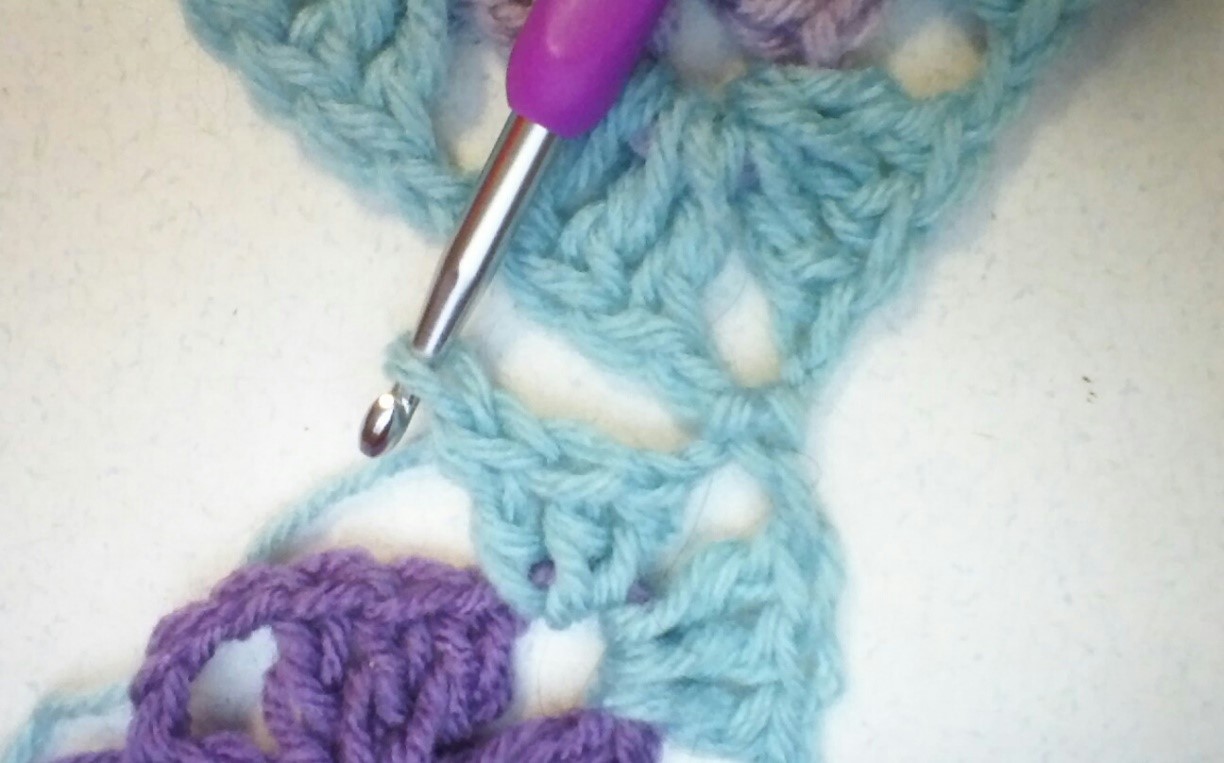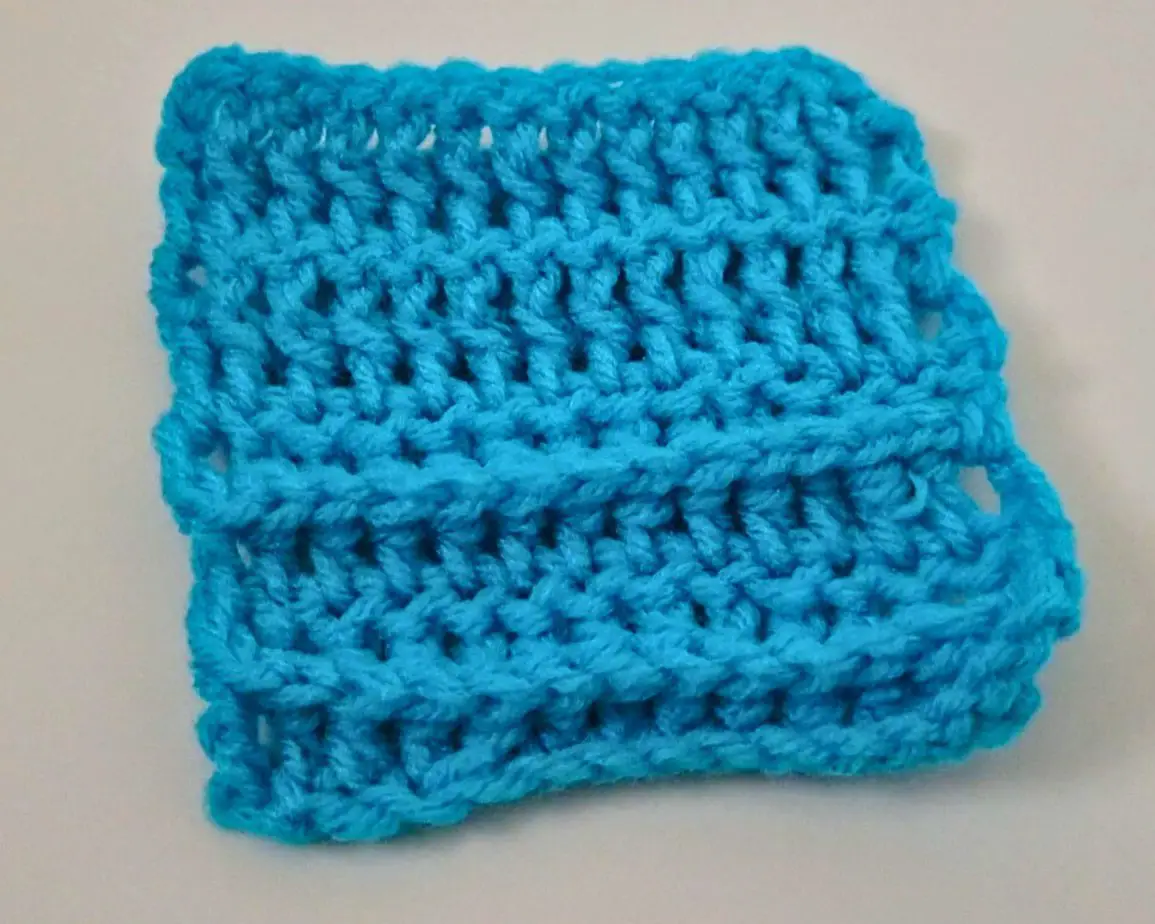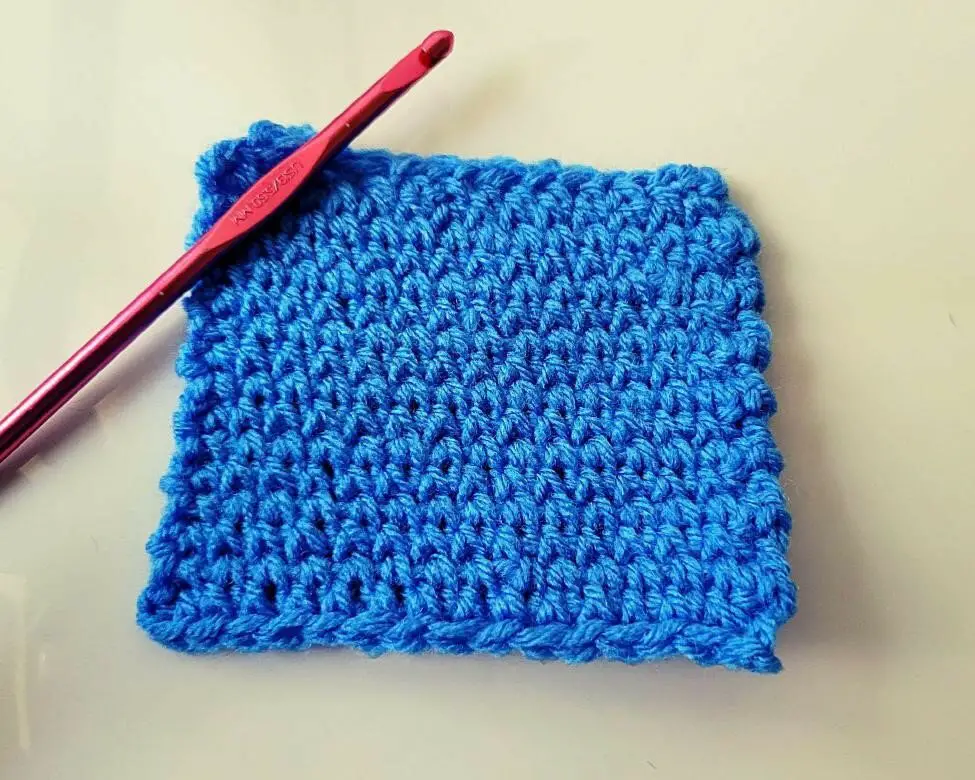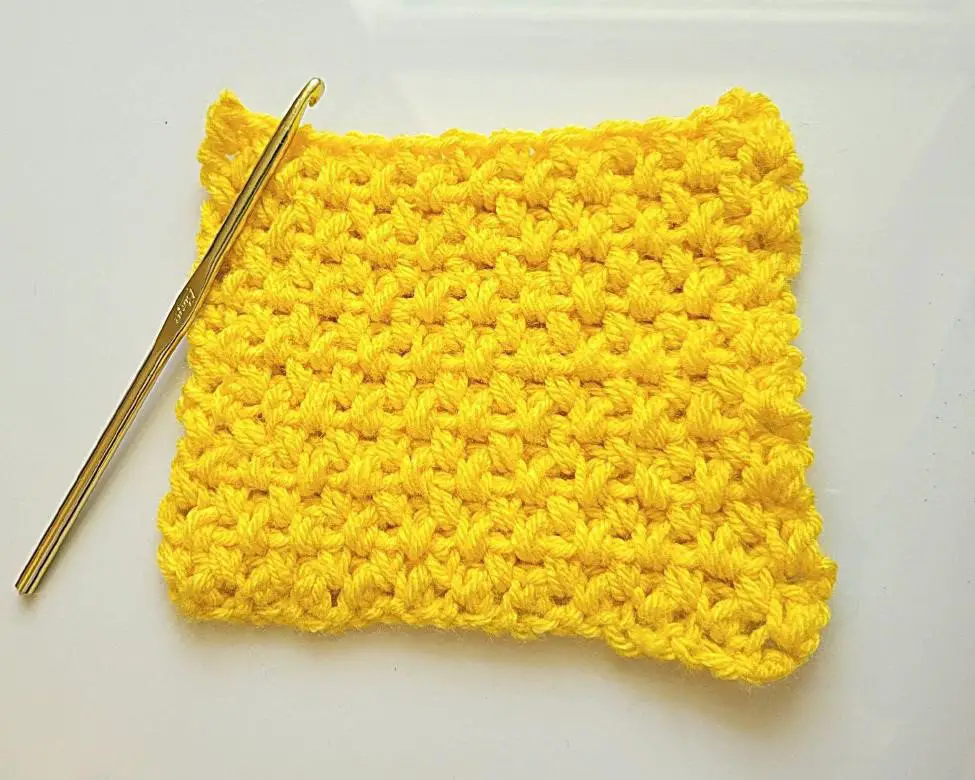Have you ever been somewhere crocheting and someone compliments you on your knitting? You grit your teeth, smile, and point out that it is crochet. Or you just smile and say thank you. To be fair, both use implements and yarn so to the uncrafty they look very similar.
I enjoy both crafts, but I am much better at crochet than knitting. My mother could knit anything, but she wasn’t that fond of crochet, and my grandmother was a master at crochet. She used to use very fine crochet thread to make delicate borders for her embroidery pieces. So it’s just a matter of taste whether you prefer knitting or crochet, or both.
In this blog, we’ll examine both, knitting and crochet, and their differences and similarities.
Knitting
It is thought knitting has its origins with Arabian seafarers. They used a method similar to knitting when repairing their fishing nets. One of the first examples of modern knitting comes from the 11th century in Egypt in the form of knitted socks. Knitting was popular as early as the 14th century in Europe. The 1390 painting, The Visit of the Angels by Master Bertram, shows the Virgin Mary knitting when the angels come to her to announce she would bear Jesus.
All male knitting guilds were popular in 15th century France. Knitted socks and hosiery were prized in the 16th and 17th centuries. The industrial revolution made knitted garments readily available to the public with the use of knitting machines. Hand knitting continued to grow in popularity through the centuries and is now one of the most popular crafts today.

Knitting uses two needles to manipulate yarn into knitted fabric. Needles range in size from very fine to very large. Straight needles are used for piece knitting and smaller projects. Circular knitting needles are needles joined by a plastic cable. These are used for knitting in the round and larger projects. Double pointed needles are used in sets for knitting in the round.

Double Pointed Needles
 There are two main types of knitting styles; English and Continental. In the English style, the yarn is held in the right hand and “thrown” over the needles.
There are two main types of knitting styles; English and Continental. In the English style, the yarn is held in the right hand and “thrown” over the needles.
The yarn is held in the left hand along with the needle in the Continental style. The yarn is “picked” from the left hand and worked on the needles.
Both styles create the same stitches. Personally, I prefer the English style, but some of my friends swear by the Continental style. There are other lesser known styles of knitting. These include Portuguese and Eastern European. You can find lots of videos on these styles of knitting. Try them out and see which style you like.
The knit stitch is performed by inserting the right needle into the stitch behind the left needle and placing the yarn over the right needle. Pull the yarn through the stitch on the left needle and let the stitch drop off the needle and onto the right needle.


The purl stitch is knitting by inserting the right needle into the front of the stitch on the left needle. Wrap the yarn around the right needle and pull it through the stitch and let it drop off the needle moving the new stitch onto the right needle.


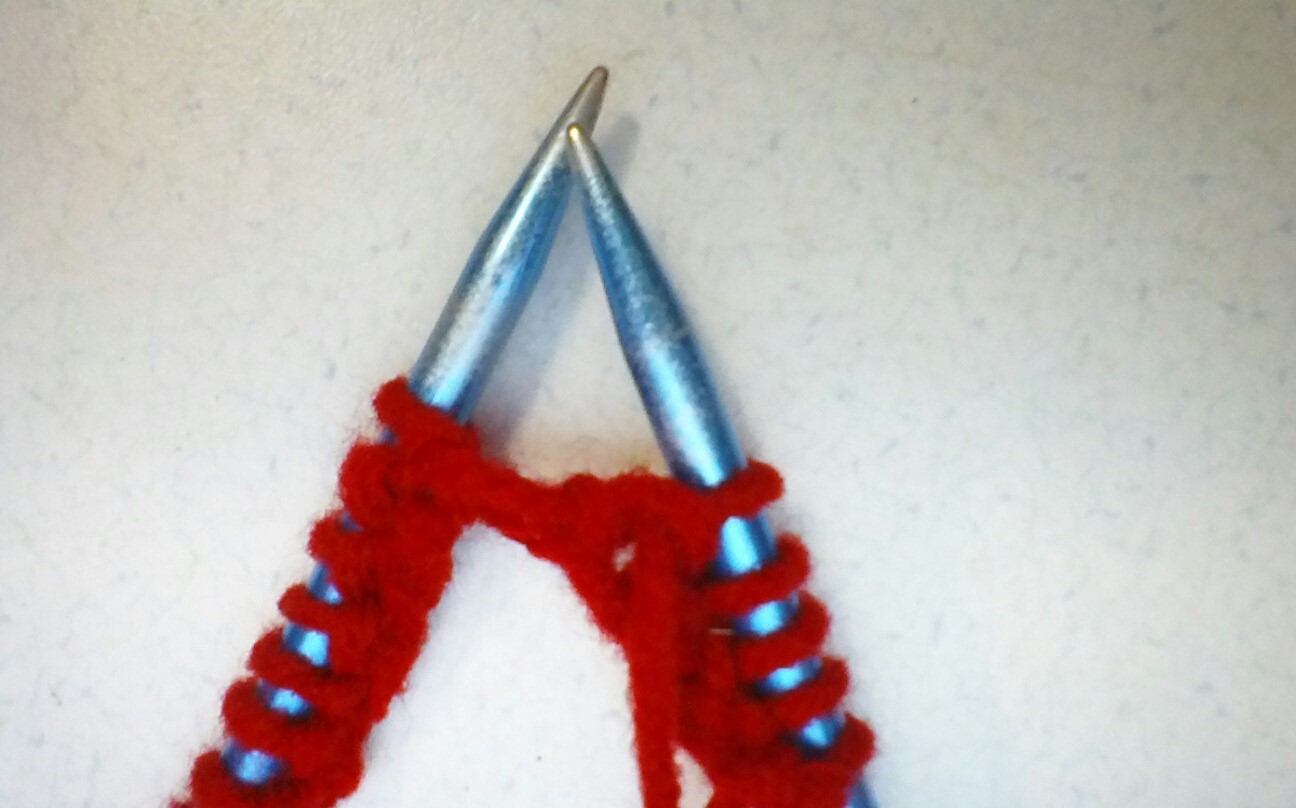
Once your project is completed you must bind your stitches off the needles. There are several ways to do this, but the easiest way is to begin like you are doing a knit stitch, but instead of slipping the new stitch onto the right needle, let it drop completely off the needles. Do this until you get to the end of the row and then pull the loose tail through the last stitch.
Crochet
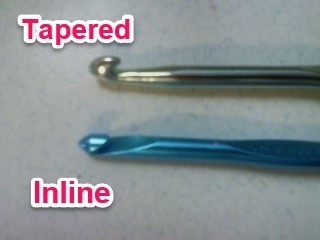 The origins of crochet are unclear. Many historians believe it has its roots in 18th century France. Other historians cite the Chinese and still, others say it has its origins in South America. During the 19th century, modern crochet developed and has grown in popularity. Crochet uses one hook to manipulate yarn. Hooks range from very tiny almost needle thin hooks used with crochet thread to very large bulky hooks used to crochet rugs.
The origins of crochet are unclear. Many historians believe it has its roots in 18th century France. Other historians cite the Chinese and still, others say it has its origins in South America. During the 19th century, modern crochet developed and has grown in popularity. Crochet uses one hook to manipulate yarn. Hooks range from very tiny almost needle thin hooks used with crochet thread to very large bulky hooks used to crochet rugs.
Traditional hooks may have inline hooks or tapered hooks. Inline hooks have a sharper defined edge while tapered hooks have a more curved edge. Tunisian crochet hooks are very long with a plastic stopper on the end. Stitches are held and worked off the hook on the return pass in Tunisian crochet. Tunisian hooks also come with long cables attached to them for very large projects such as afghans and blankets.
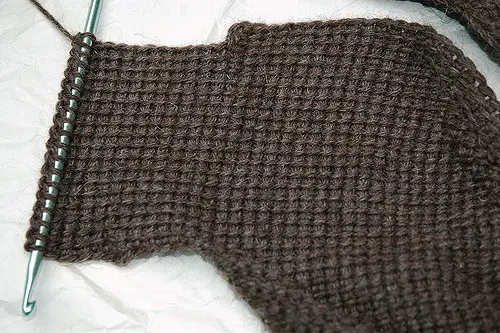
There are two main ways to hold a crochet hook; pencil and knife. As the names imply the hook is held either like a pencil or a knife. Each style creates the same stitches. It is personal preference on which hold to use. Use the one that is most comfortable for you. I use the pencil hold most of the time, but if I’m working with a bulky yarn I use the knife hold. I also use the knife hold when I am doing Tunisian crochet.

Knife hold
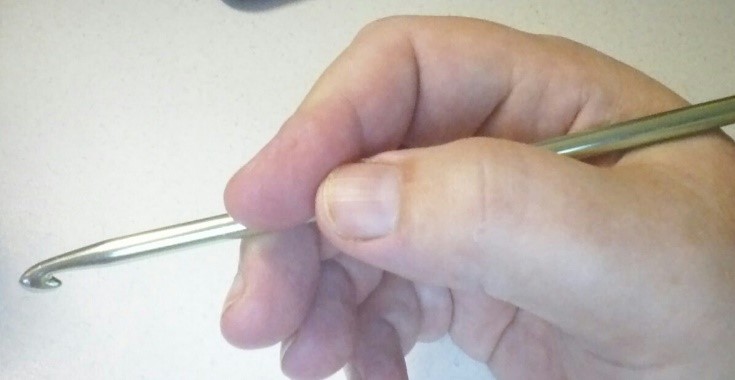
Pencil hold
To begin a crochet project, you must first crochet a foundation chain. If you are using single crochet, the first chain stitch counts as the first crochet stitch. Insert the hook into the next chain stitch, place the yarn over the hook and pull it through the chain stitch. Yarn over and pull it through the two loops on your hook to complete the stitch.
If you are using double crochet, skip the first three chain stitches, place the yarn over the hook, insert it into the next chain, place the yarn over the hook again and pull it through the chain stitch. Yarn over and pull the yarn through the first two loops on the hook, yarn over and pull it through the last two loops on the hook to complete the double crochet stitch.
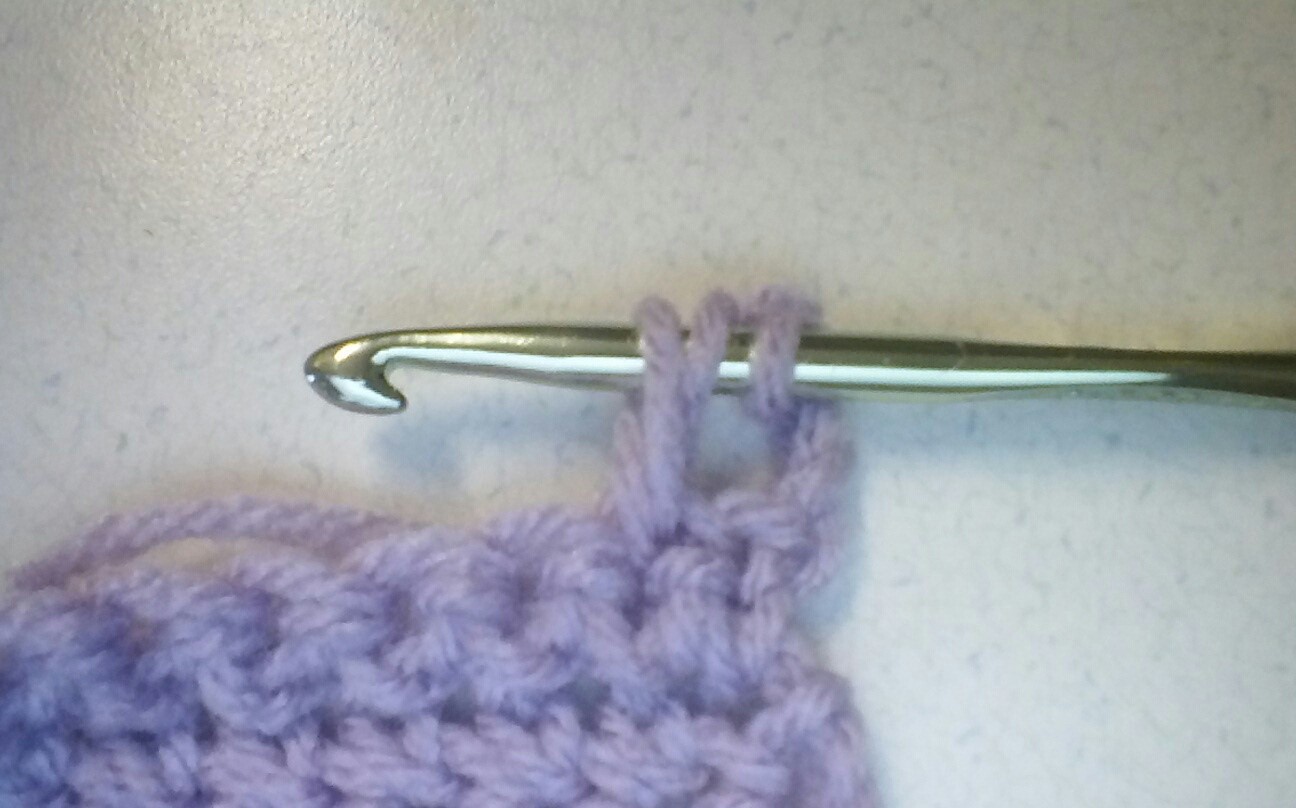
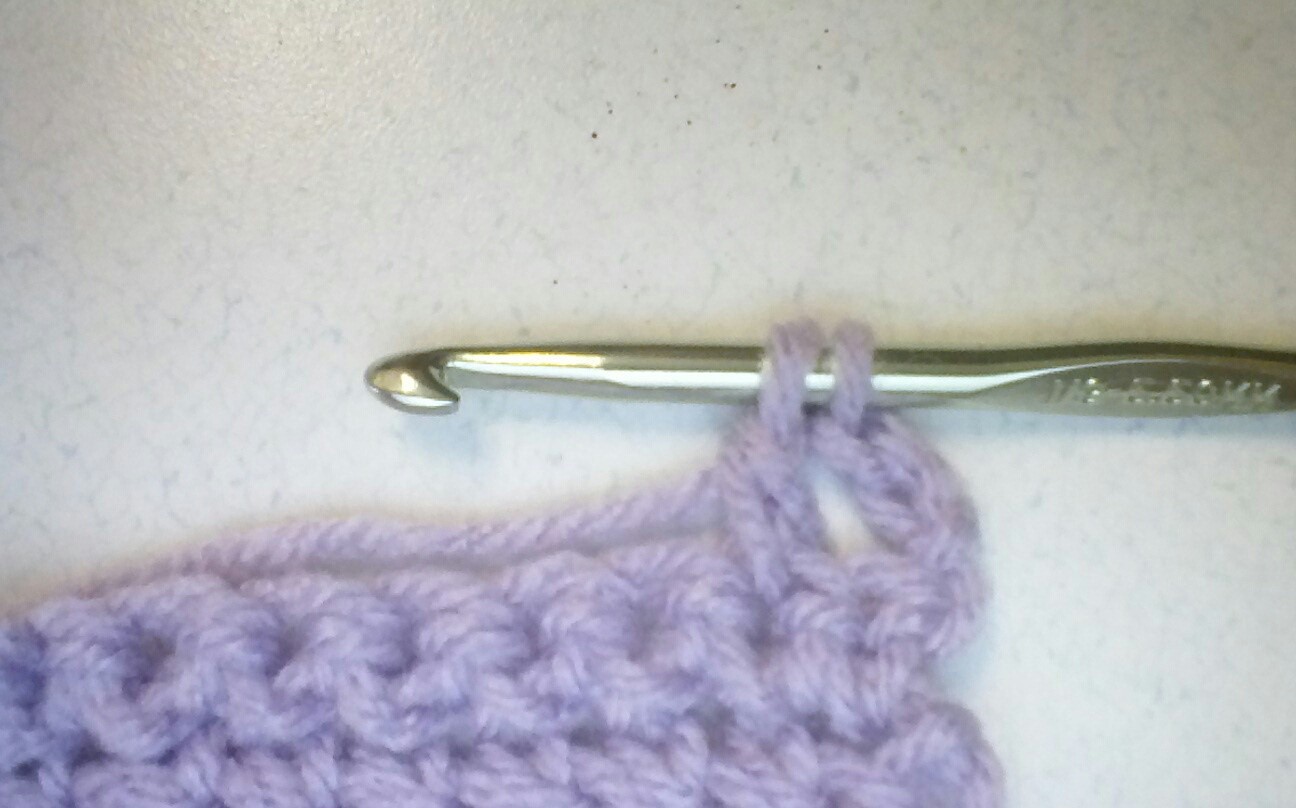
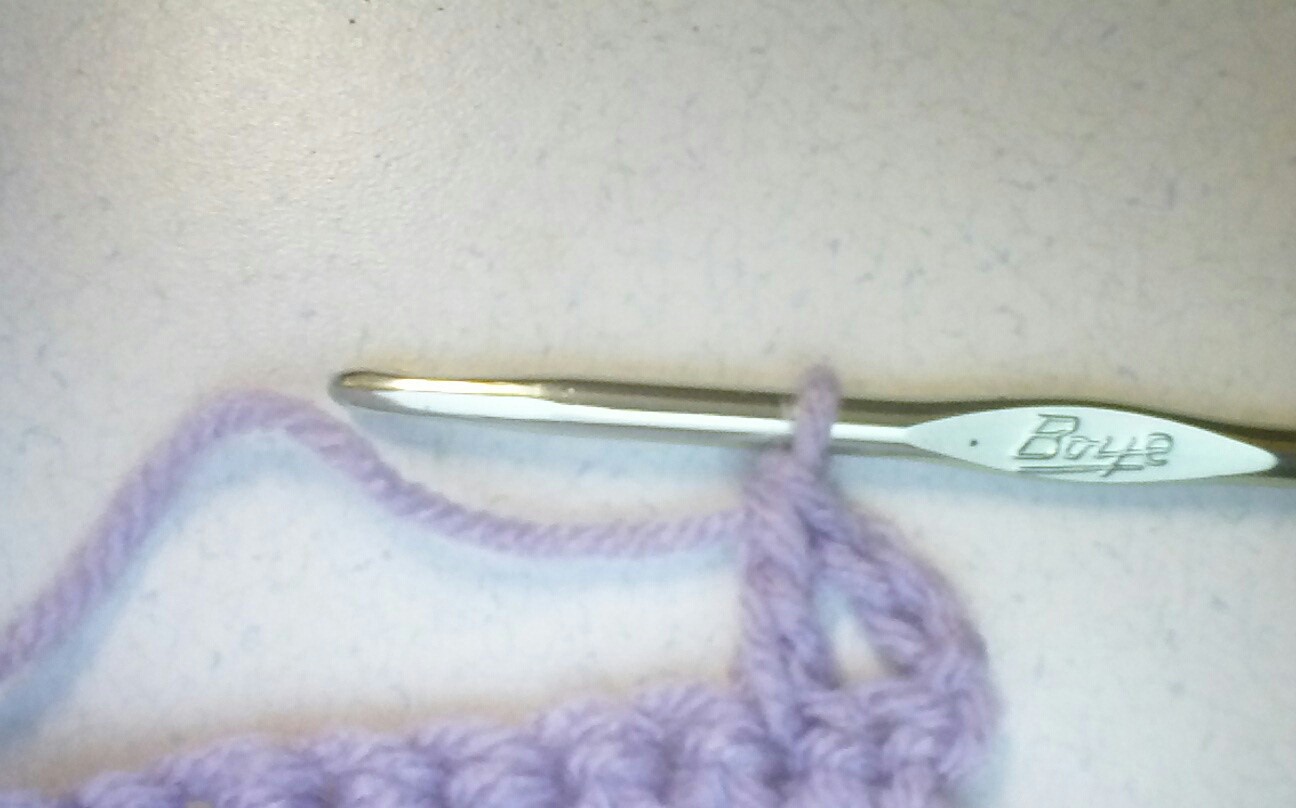
Once you are completed with a crochet project simply pull the yarn through the last stitch and snip it.
Stitches
Knitting produces smaller stitches than crochet and uses 30 percent less yarn than crochet. (Both knitting and crochet are used for very fine lace projects.) Most knitting projects have a right side and a wrong side. Most crochet projects look the same on both sides, however, if you know what to look for you can tell the difference between the right and wrong side of crochet fabric.
It takes two needles to knit and one hook to crochet. Both crafts can be done in the round. Both crafts also have projects which start from the bottom up, or from the top to the bottom. Knitting and crochet are used to create a wide variety of projects ranging from garments, bags, accessories, home décor, toys, and many more. Both use a wide variety of yarn from very fine fingerling yarn to large bulky yarn.
Knit and purl stitches are the basis of all knitting. By combining these stitches with slip stitches and other techniques a knitter can produce simple to very complicated stitches. Single crochet and double crochet are the two basic stitches upon which all crochet is based. If you break down even the most complicated crochet pattern you will see it combines single and double crochet stitches with other techniques to produce its stitches.
Designers use a set of standardized abbreviations and terms in both knitting and crochet.
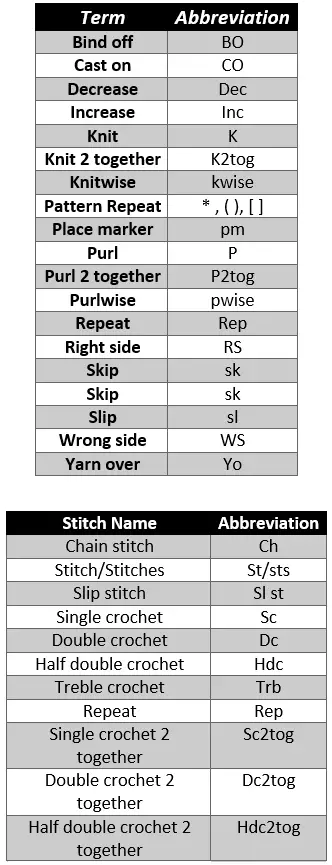
Knitting and crochet patterns also use symbols for charts, diagrams, and graph patterns. These patterns have the distinct advantage of being able to be worked by anyone who understands how to read them. They strip away the language barrier since they use the same standardized set of symbols no matter what language the designer speaks and writes. For example, I like Russian patterns for the intricacy of their designs, but I can’t read or speak Russian. But with charts and diagrams, I can work Russian patterns easily. Once you learn how to work and read patterns which use symbols, you open up an entire world of patterns to explore.
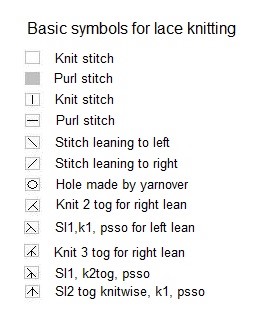

Patterns
Written knitting and crochet patterns are very similar. Both list the materials you will need, the type and amount of yarn called for, the size of the needles or hooks, and the gauge of the stitches. Gauge refers to the number of stitches and rows it takes to work up a 4 by 4-inch swatch of fabric.
Gauge is affected by the size of the needles or hooks, the weight of the yarn, and your tension. It is a very good idea to get into the habit of working up a gauge swatch before you begin a pattern. Compare your swatch to the gauge of the pattern. If it is too large you may have to use smaller needles or a smaller hook. You may also have to tighten up your tension. If the gauge swatch is too small, a larger hook or needles may be needed, or you could loosen your tension. By checking your gauge, you will ensure your finished project will be the correct size.
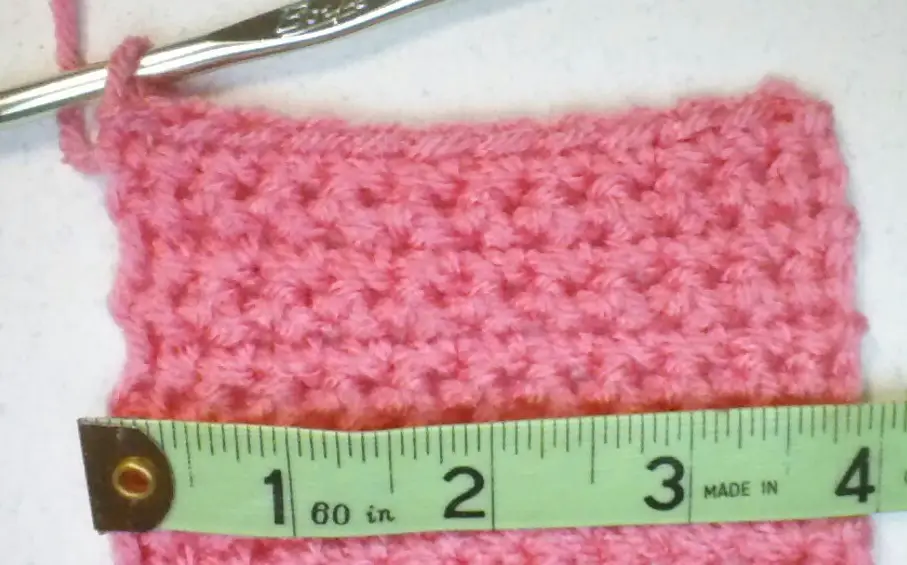
Most designers include a Note section and a Special Stitches section in their patterns. These sections give you tips on working the pattern as well as an explanation of any special stitches used in the pattern.
Next is the body of the pattern. Written knitting and crochet use abbreviations for stitches and techniques so that the patterns are not miles long and confusing. If you are using a knitting or crochet graph or chart, begin at the bottom and work your way up. Each odd row is worked from right to left, and even rows are worked from left to right unless specified.
Recommended Reading. Free on Kindle with Kindle Unlimited.
The Almanac of Crocheting is the complete comprehensive A to Z guide on crochet available on Kindle and Free if you have Kindle Unlimited. It will take you from a Beginners level all the way up to advance. And countless projects for the novice to all the way up to Expert. This Box set takes you from step one novice all the way to expert with detailed instructions and pictures. Click Here to take a look at it on Amazon.
End Notes
As you can see, knitting and crochet are different, but they share some similarities. I like to do both, although I find knitting more of a challenge. No matter which craft you enjoy, both are time-honored skills which produce lovely and treasured pieces. Studies have shown crochet and knitting have a positive effect on your overall health. They help relieve depression, anxiety, lower blood pressure, and develop and maintain fine motor skills.
Knitting and crochet are excellent skills for children. Both help teach reading and fine motor skills as well as give them a chance to express their creativity. They also give children a sense of accomplishment as they proudly show off their creations.
Which one do you like? Do you like both knitting and crochet? Can you read and work diagrams, charts, and graphs? Have I missed anything? Let me know in the comments, I’d love to hear from you.
Thank you so much for dropping by. Until next time, take care and keep on hooking!
If You Enjoyed this Article Please Share and Pin. It is Greatly Appreciated. 🙂
